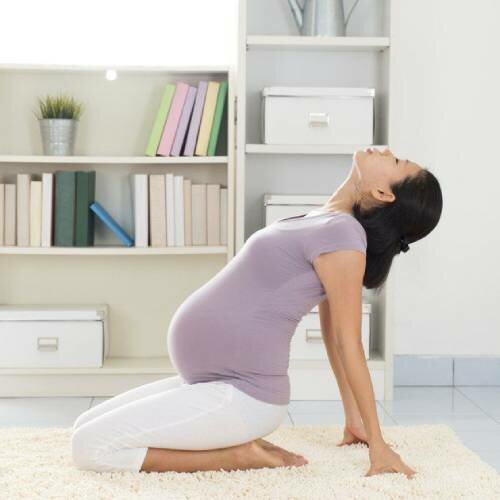How far are you in your pregnancy? Is your due date getting closer? Well, no need to worry because today we come with a little help that will make childbirth way easier for you. Moms-to-be tend to get a bit worried before delivery, especially if it’s their first child because they have no idea what to expect. The good news is that you can now start doing some pelvic floor exercise to make delivery easier.
You might incorporate some stomach and pelvic floor strengthening exercises into your everyday routine to see if it makes a difference. Pelvic floor strengthening exercises can have a significant impact on your overall health. They increase circulation, alleviate back pain, and strengthen joints. All of this contributes to you feeling your best. Performing pelvic floor muscle exercises (Kegels) throughout pregnancy onwards will help prevent those unintentional wees during the final stages of pregnancy along with the six months of childbirth. That said, read on for 7 exercises that will strengthen your pelvic floor muscles for an easier delivery.
Shop on Zynah.me by Fustany, more than 1000 beauty products and 50 brands ✨💄
1. Child’s pose

This yoga position lengthens the pelvic floor muscles and relieves discomfort. Kneel and take a seat on your heels. Then, slowly bend forward and walk your arms out far in front of you. Take a deep breath. You can also support your head by resting your elbows on the floor in front of you. As your belly expands, you may need to stretch your knees wider apart to make room. You can sit up higher if resting back on your heels is uncomfortable. Make sure your hips are not higher than your heart. Other rules particular to you should be discussed with your doctor.
For Mommies: Exercises and Remedies to Restore Saggy Breasts After Weaning
2. Deep squatting

Deep squats assist in relaxing and lengthening the pelvic floor muscles as well as stretching the lower abdomen. Pose with your legs wider than your hips. Squat as low as you can with your hands squeezed tightly in front of you. Your doctor can advise you on how frequently and how often you should do deep squatting.
11 Types of Food That Keep Your Kidneys Healthy
3. Cat-cow pose

This yoga position relieves stiffness and lower back problems. Get down on your knees. Breathe and round your back, tucking your chin into your chest. Inhale, then bend your back down and gaze up at the sky.
4. Perineal bulges

Perineal bulges should be performed only in the final three weeks of pregnancy. Practice perineal bulges in your intended labor and delivery positions. Sit on a tiny towel that runs from front to back. Gently push the towel against your perineal body, or the region between the vagina and the rectum. Consider gently separating the sit bones, which you can feel in your glutes, and sliding your tailbone far from the pubic bone.
5. Perineal massage

Perineal massage extends and relaxes the perineum's tissues. This can begin at 35 weeks of pregnancy. Once a day, do this massage method for 10 minutes. To relax before the massage, take a warm bath or apply a warm compress to the perineum for 10 minutes. Relax or lie down in a relaxed position. Apply a water-based lubricant to your thumbs and perineum. Insert your thumbs around 1 to 1.5 inches inside your vagina. Downward and to the sides, press until you get a little burning, stinging, or tingling feeling. Maintain this pressure for two minutes, or until the spot numbs. Breathe deeply and focus on relaxing your muscles.
6. Kegels

Kegel exercises serve for building up the pelvic floor muscles, which helps to prevent urine incontinence after childbirth. To perform Kegels, squeeze the muscles surrounding the vagina as if you were trying to stop the flow of pee; hold for 10 seconds while breathing normally, then gently release. Perform twenty sets five times per day.
7. Belly breathing

Belly breathing, also known as diaphragmatic breathing, stretches the muscles in your pelvic floor. It, similar to various pelvic floor exercises during pregnancy, may aid with urine incontinence. Sit with your knees crossed and your lower back supported, and your hands on your stomach. You can also sleep. Inhale slowly through your nose while expanding your abdomen, maintaining your back and shoulders still. Draw in your abdominals as you breathe through your lips, feeling them deflate.




































